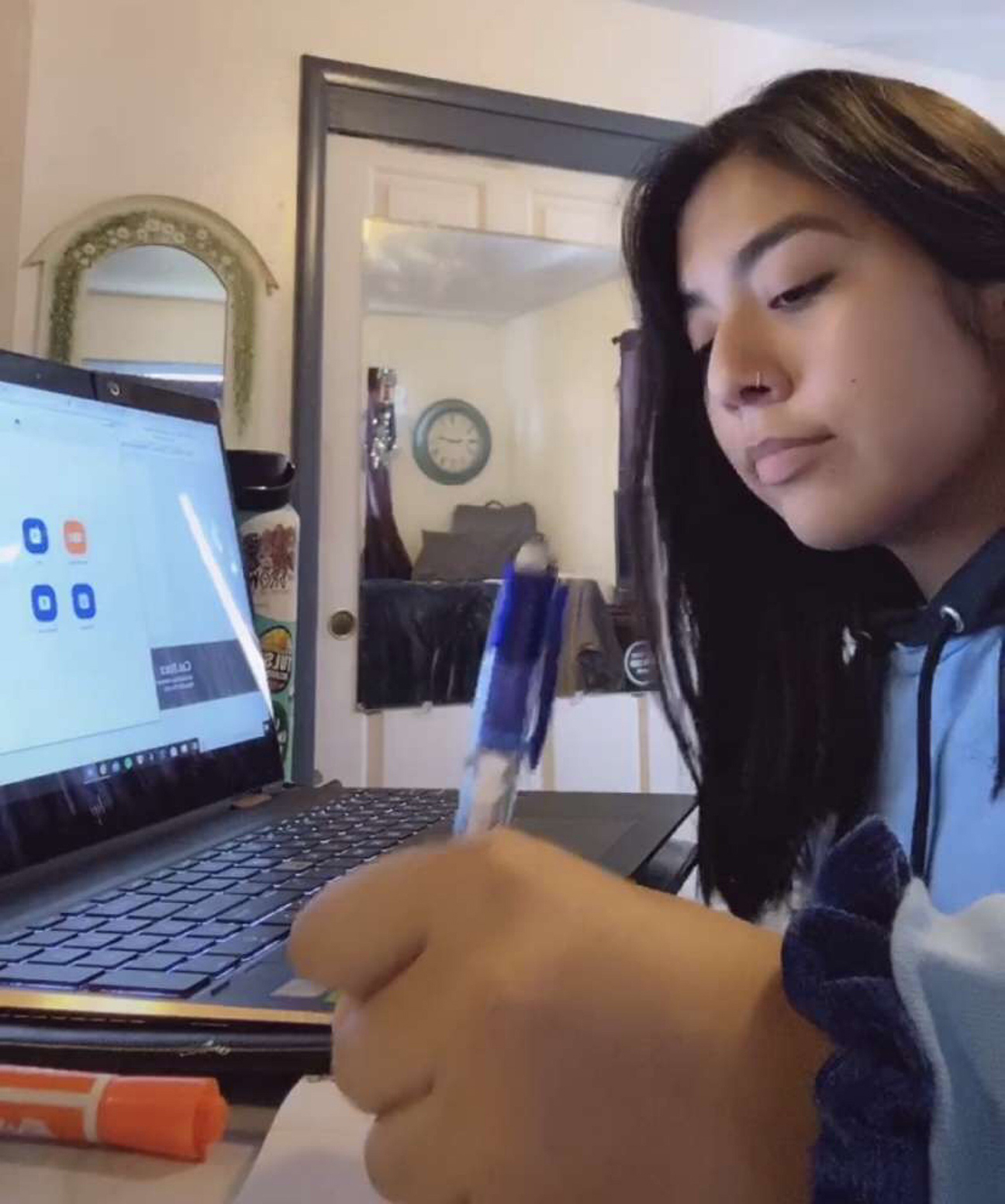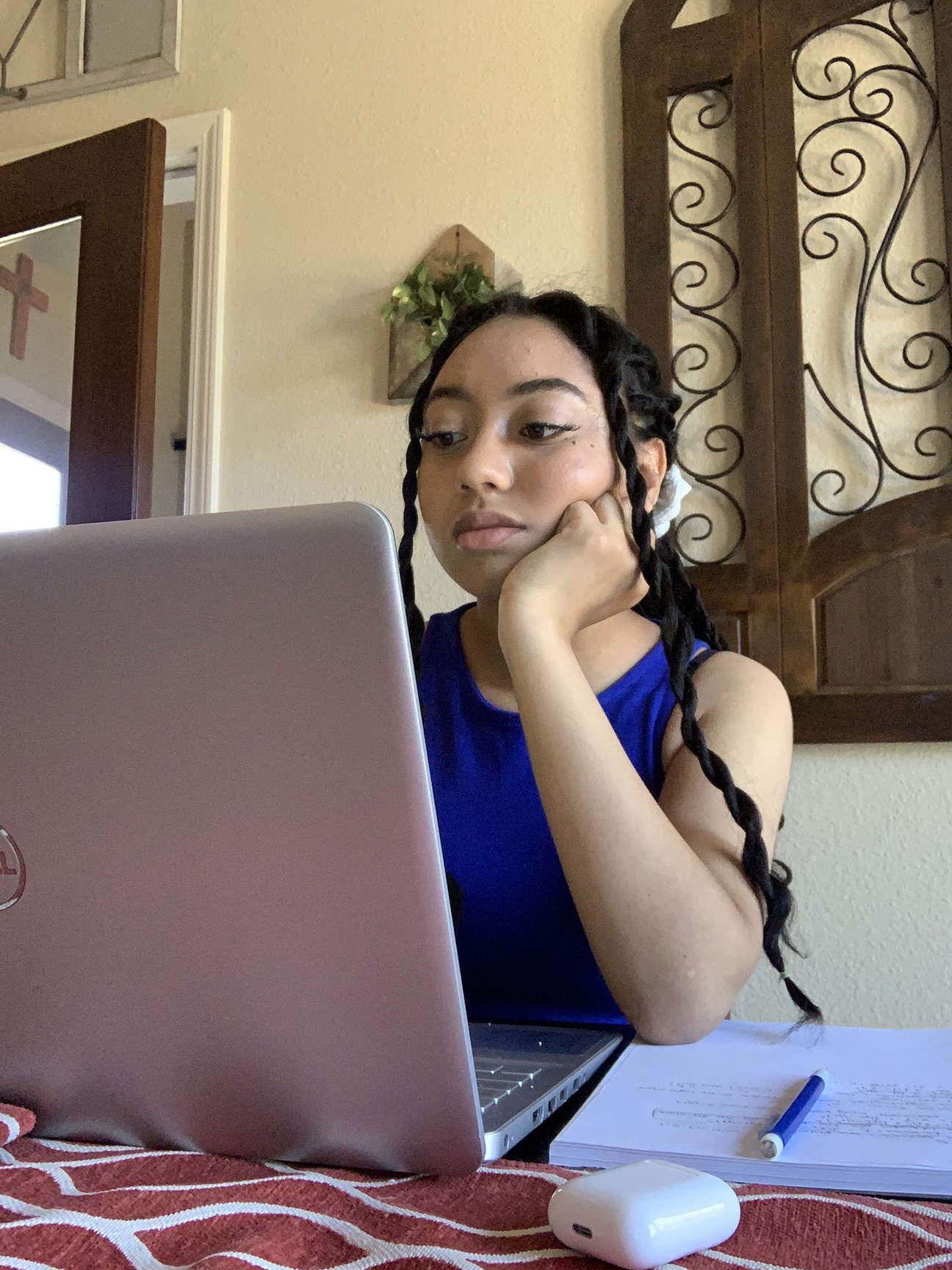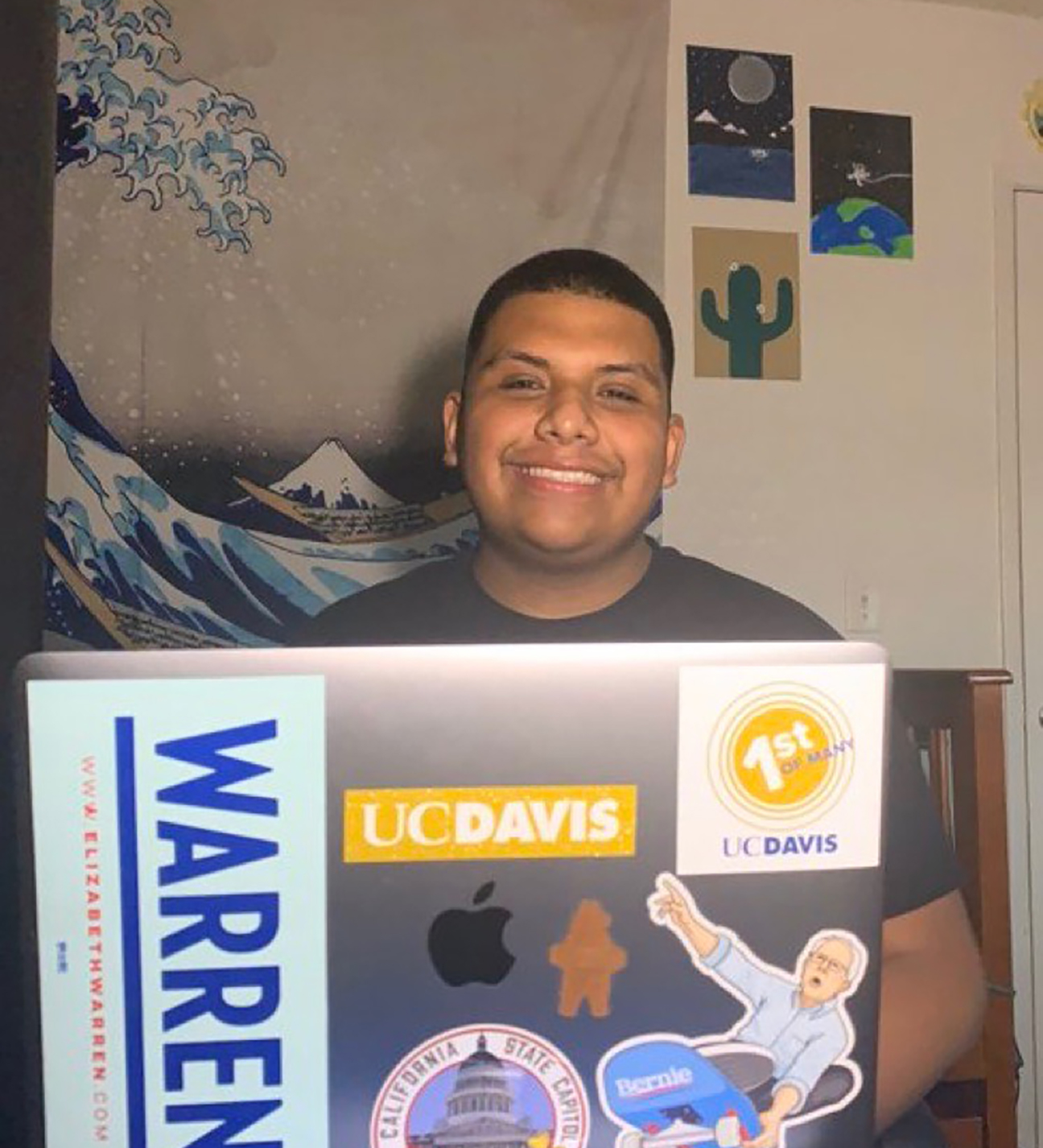Viviana Cervantes |
Story and photos by Ilyne Castellanos
Having been accepted to the California Polytechnic State University last fall, Elena Félix made the most of her experience this last year. From the wrestling club to the MEXA club, an organization that works for the advancement of Chicanx youth, and other extracurricular activities, Felix, an aerospace engineering major, was always keeping busy. But then, she and over 20,000 Cal Poly students were urged to go home. Following the campus closure of universities all over the state in early March, Elena found herself coming back home to Salinas.
At home, she and countless students enrolled in institutions for higher learning had to switch to what is being called “Zoom University” by many of the students. Professors have moved classes to an online format where discussions and lectures are conducted through video calls. What Félix described as an important aspect of her education at Cal Poly is the school’s unofficial “learn by doing” philosophy. “As an engineering student it’s really difficult to learn online especially since “the learn by doing” motto can’t really be applied since we all don’t have the resources that would be available to us on campus,” said Félix.
On May 12, California State University Chancellor Timothy P. White announced that the 23 campuses all over California would primarily be offering online classes through the fall 2020 term. Some specific courses will have in-person class times, but this is still worrying for students like Félix, who find this new format challenging to adjust to. ”I’m really just trying my best to cope with the workload, but I still sprang 8-plus hours a day Monday through Friday doing school work, reading textbooks, and teaching myself the discipline and motivation to do work … ”
Enlarge

CSU student, Tianna Young, is a marine biology major attending San Jose State University. She found herself back at home and also finding ways to adjust to the new norm. Young had immersed herself in her new life in San Jose which she chose because of its proximity to her home in Monterey County, and its marine biology program. “I really enjoyed the experience of being an on-campus student. it felt as though I was gaining my own independence while being able to grow as an individual,” said Young.
“I don’t enjoy the transition with online classes because I don’t really feel motivated or feel like I’m learning very much. I get more distracted and it’s difficult to find a good place to study. Online labs are even more difficult. I also dislike the fact that I’m not able to collaborate with my classmates the way I was able to with in-person classes,” she continued, highlighting the importance that collaboration and conversation take in university education.
Enlarge

The University of California and its 9 campuses are also taking measures to help students continue their education despite the complications that have arisen. University of California President Janet Napolitano, announced on May 20 that the different campuses were still “scenario planning” and developing a plan for the coming fall term. “The safety and well-being of our campus community is our first priority, and these decisions must be made in the context of local, state, and federal public health restrictions … I anticipate that most of, if not all of, our campuses will operate in some kind of hybrid mode,” Napolitano said in an address to the UC board of regents.
Ivan Dueñas-Garcia, a community and regional development and sociology major at UC Davis found the transition back to his home in Salinas to be a challenge. “No one in my family has been in my position as a college student. It’s like unknown territory for them, so they can only do so much to support me. My family lives in a small apartment and my mother takes care of kids for a living, so it’s not the best environment for me to study in. So I tend to isolate myself in the bedroom while I’m in a lecture or in meetings.” UC Davis and many other universities run on a quarter system, which means more work and less time. Confusing transitions to an online format meant that for Dueñas-Garcia, classes lost lectures, and cramming unfamiliar materials became necessary to keep up with UC Davis’s fast pace.
Enlarge

Hartnell College brings education to around 17,000 students in Monterey County every year, and with other local community colleges like Monterey Peninsula College, and Cabrillo College also moving to an online format, many students are having a hard time balancing the seemingly increased course material. Viviana Cervantes is a liberal studies major at Hartnell College. She said that she is grateful for sympathetic professors who have made an effort to evolve coursework, and to reach out to students. However, for her and other students it was difficult to connect with the classroom, “Firstly, you can’t see others since you have an option of whether or not to show your face, and then sometimes many people simply do not attend … I feel like you can’t pay attention on Zoom the way you would in a class.”
Professors are now posed with a new challenge: How do you accommodate your curriculum and teaching style for your students in such a different environment? It can be a lot of pressure, but one thing is for sure, many professors have been taken out of their comfort zones as much as students have. “ … Instructors have turned to teaching centers and instructional design units, as well as to colleagues, professional organizations, social media, and internet search engines, to learn together about a range of digital tools they will need to use to teach remotely and about the design consequences of those choices,” says Jody Greene a Professor and Dean of the Center for Innovations in Teaching and Learning at UC Santa Cruz, as part of an expert panel interviewed by Inside Higher Ed.
Besides finding ways to navigate teaching tools and systems, it is also imperative for professors to understand that learning from home can be a challenging experience for students, as Dueñas-Garcia described. At home new challenges surface, whether it be tending to a family, working from home, inadequate internet, or simply finding a quiet place to work. It is imperative for professors to make an effort to help their students and be conscious of the difficult situations they find themselves in. Educause has compiled a list of different institutions and organizations creating plans of action for professors to follow to ensure that students are getting the most possible out of online school.
Becoming students of Zoom University was definitely not the plan for everyone, but continuing to advance their education is proof that although their plans for university have not come to fruition, the road to graduation is still in sight. The move to online university shows determination to create normalcy amidst the chaos, and a sign of these students’ drive to follow through with their dreams and achieve their goals no matter what the impediments are.
Have something to say about this story? Send us a letter.